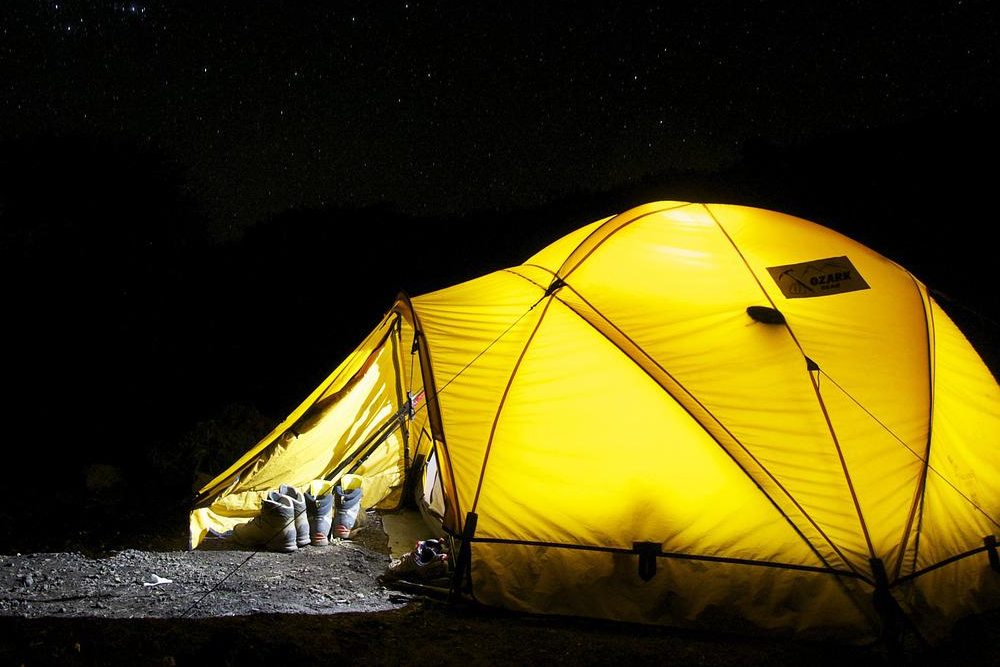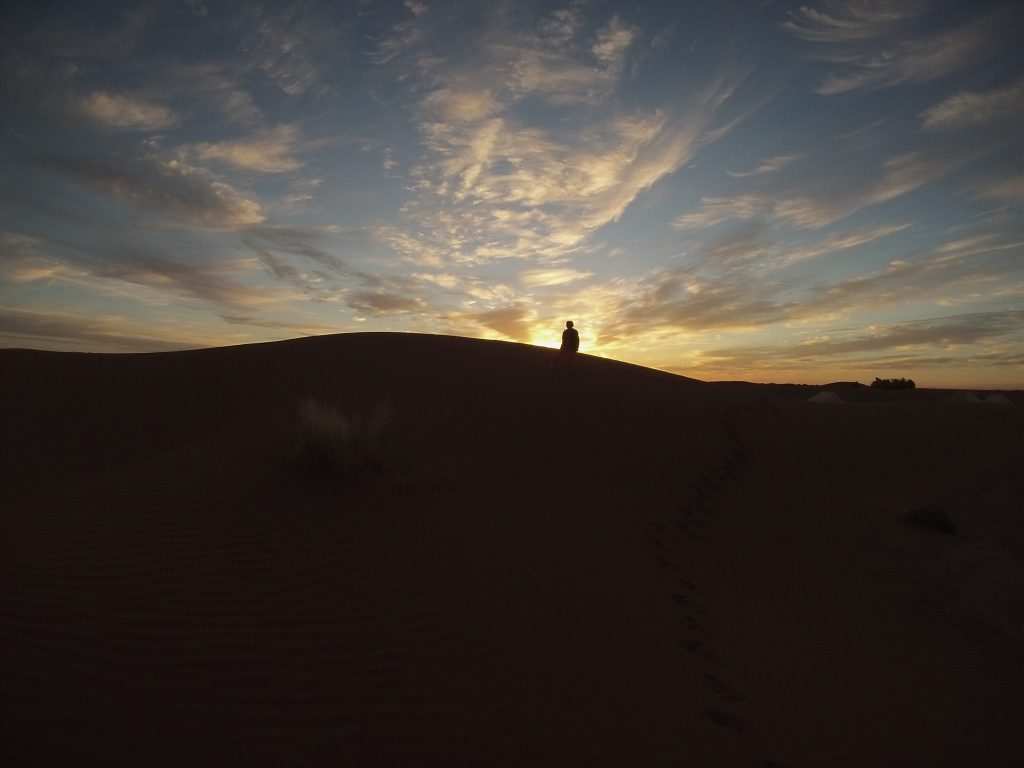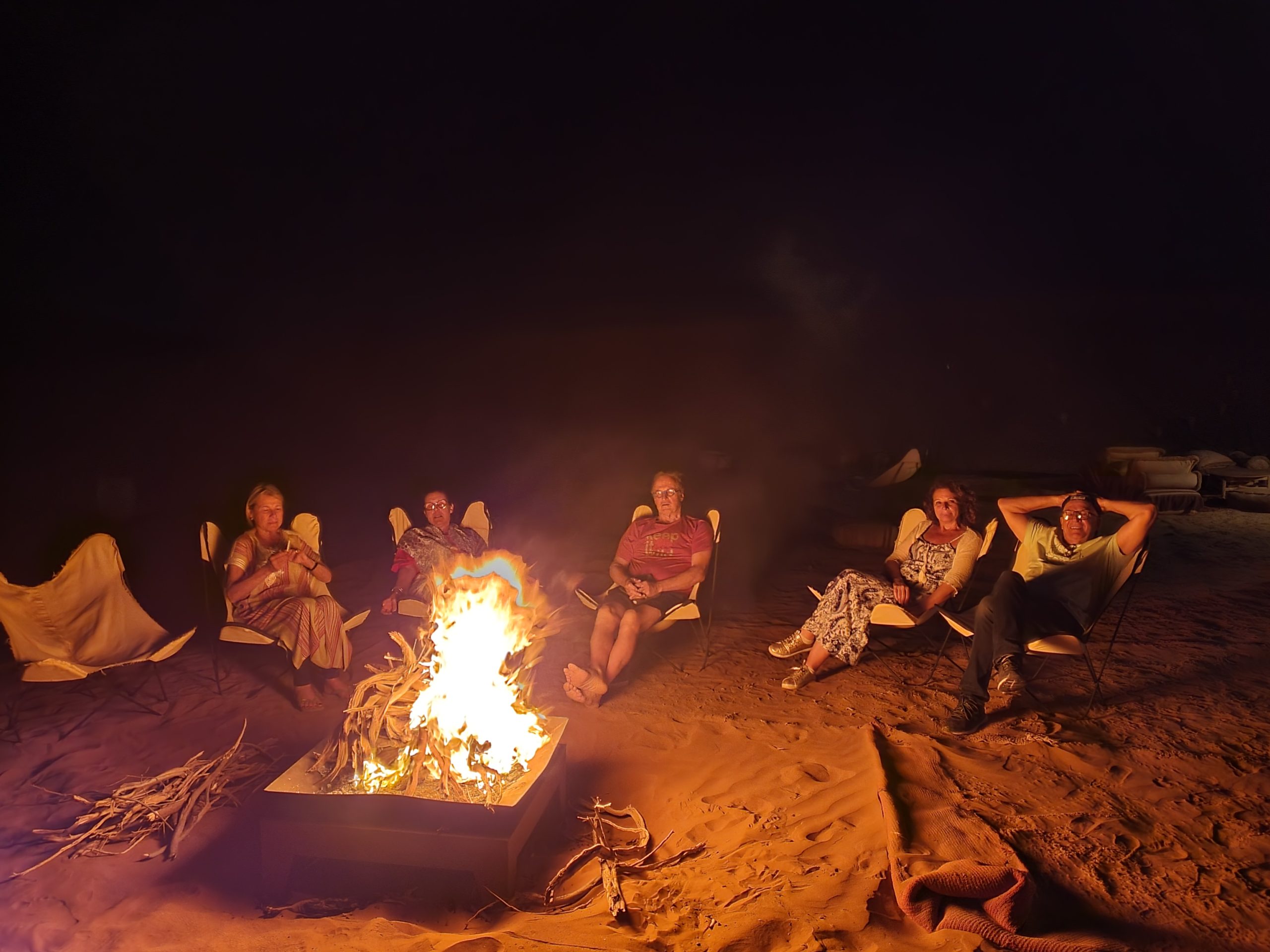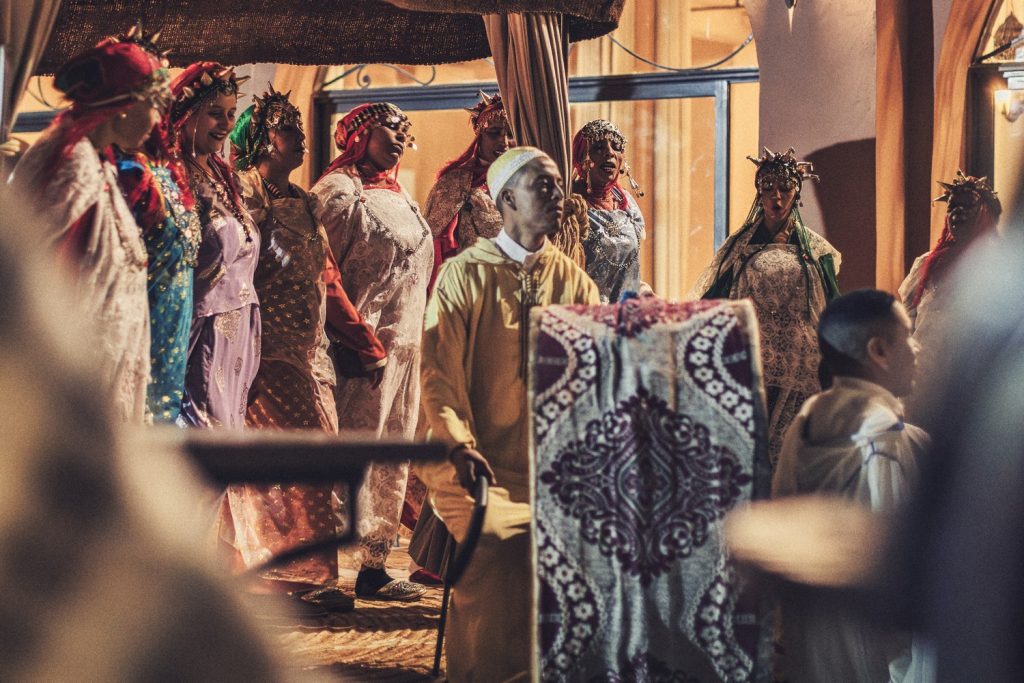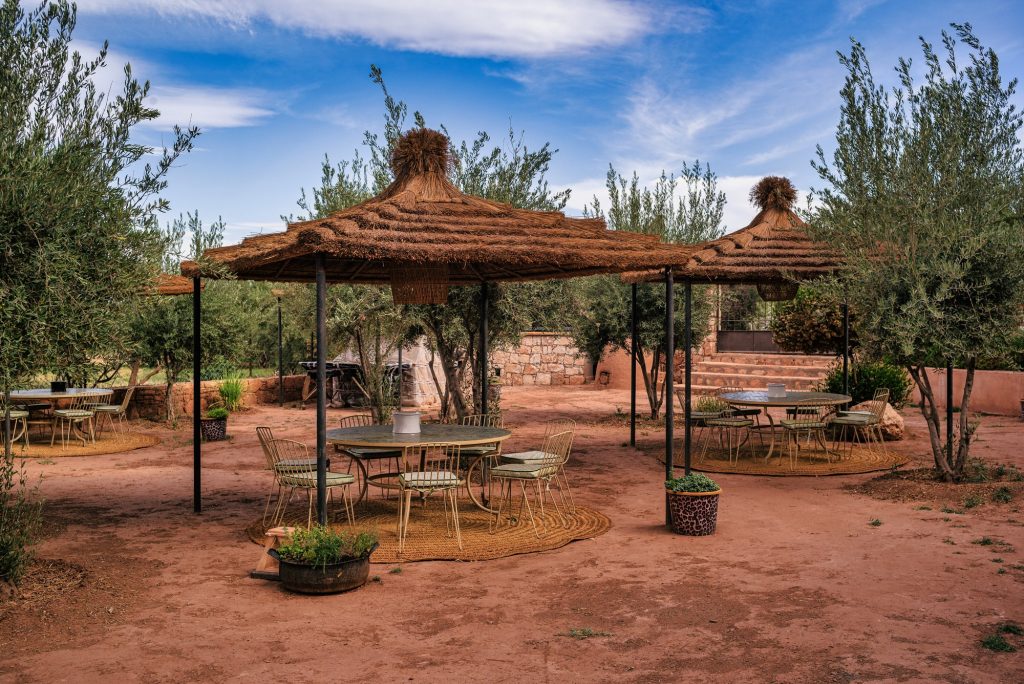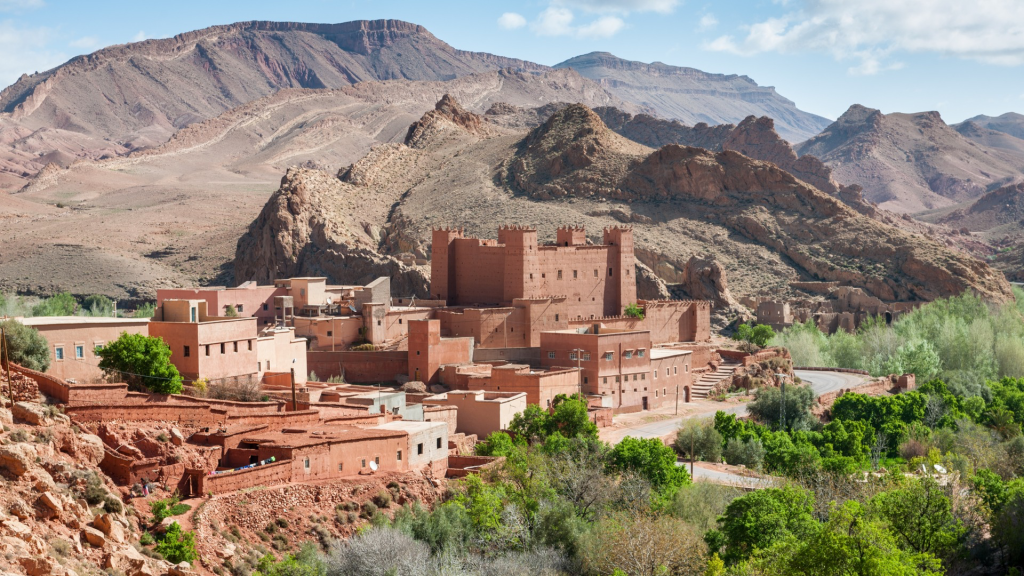When you think of the Moroccan desert, Merzouga often springs to mind. But further afield, beyond the tarmac roads, another Sahara is revealed. Wilder, quieter, truer: Erg Chegaga.
Here, the dunes stretch endlessly, the sky seems wider, and silence takes over. No crowds, no tourist attractions. Just the sand and the wind. Chegaga isn't something you walk through, it's something you tame. Slowly. Deeply.
Erg Chegaga, Moroccan desert: the ultimate Saharan adventure
If there's one place in Morocco where the desert reveals itself in all its grandeur, it's Erg Chegaga. Far from the beaten track, this sand sanctuary unfurls its monumental dunes under an infinite sky. An invitation to adventure, raw and majestic.
A wild and authentic desert in southern Morocco
Located around fifty kilometres west of M'Hamid El Ghizlane, Erg Chegaga lies at the heart of the great desert of southern Morocco. Accessible only by track, this erg is one of the most remote and spectacular in the country. A land of silence and immensity, shaped by the wind and inhabited by light.
Here, the Sahara expresses itself in all its purity: blond dunes as far as the eye can see, shifting ridges sculpted by the winds, alternating fine sand and rocky plateaux. A sea of raw, living sand, where you feel alone in the world.
The largest erg in Morocco
At 40 kilometres long and 15 kilometres wide, Erg Chegaga is the largest dune field in Morocco, more extensive and wilder than Erg Chebbi. Some of the dunes are up to 60 metres high, sometimes more after windstorms. This immensity is as impressive as it is soothing.
Far from the usual tourist itineraries, Chegaga offers an authentic desert experience, with occasional encounters with nomadic caravans and a few free dromedaries. The light is intense, the colours change with the hours, and the starry sky is a spectacle in itself.
Between nomadic traditions and natural heritage
Erg Chegaga belongs to the ancestral territory of the Aït Atta tribes, guardians of a nomadic lifestyle in harmony with the desert. Nearby, the sacred oasis of Oum Lâalag protected by palm trees and fed by an unlikely fresh spring in the middle of the sand. This resting place has been a spiritual landmark for caravanners for centuries.
The entire site is part of the Iriki National Park, which protects the region's desert and semi-arid ecosystems. Official recognition for this jewel of the Moroccan desert, whose beauty is as fragile as it is extraordinary.
How do you get to Erg Chegaga from Marrakech, Ouarzazate or M'Hamid?
Chegaga is not reached by chance. Far from tarmac roads, this desert has to be earned: that's what gives it its strength and mystery. To reach the dunes, you first have to descend to the gateway to the desert, then go deep into the wilderness, with no landmark other than the horizon.
From Marrakech
Most travellers set off from Marrakech to reach Erg Chegaga. You then have to cross the High Atlas and descend to the Drâa Valley, a route that is as long as it is spellbinding. It takes around eight hours to reach M'Hamid El Ghizlane, the last village before the desert.
The first part of the route leads to Ouarzazate, over the Tizi n'Tichka pass. This national road, recently widened on several sections, winds through the mountains and offers spectacular views.
A night at the Ksar Ighnda and the next day from Ouarzazate, the road heads due south towards Zagora, skirting the Drâa palm grove and its adobe ksour. Villages, oases and kasbahs dot this peaceful stretch, which passes through Agdz and Tamgroute (a pottery town).
M'Hamid marks the end of the asphalt. This is where the Saharan adventure really begins.
From M'Hamid
Leaving M'Hamid, the desert takes on a whole new dimension. No more tarmac, no more signs: just a sandy track heading west, between hamadas, regs and emerging dunes. It takes around sixty kilometres of off-roading to reach Erg Chegaga. This distance is misleading, as it takes two to three hours to cover by 4×4, depending on the terrain and the state of the dried-up wadis.
To venture out, it's best to enlist the help of an experienced driver or local guide. Here, orientation is based on relief, tracks and instinct. Those who are sometimes called the "blue men" of the desert know these shifting tracks like the palm of their hand.
But others choose a slower, more intimate approach. Riding camels, it takes several days to reach the great dunes, with stops every evening in tents or under the stars. Some even opt for a trek on foot, a demanding experience reserved for seasoned walkers accompanied by a logistics team.
Whichever route you choose, crossing this stretch of desert, far from any landmarks, marks the real start of the adventure.
What to do in Erg Chegaga?
You discover the desert by experiencing it. At Chegaga, the days are punctuated by simple gestures that take on another dimension: walking in the sand, climbing a dune, listening to the silence. These moments leave their mark, because they refocus.
Here are six experiences to enjoy to the full, at the heart of the erg.
Explore the dunes on foot
Nothing can replace the feeling of walking in the silence of an erg. At Chegaga, the dunes stretch as far as the eye can see, forming a moving, soft, almost liquid landscape. From your bivouac, set off at daybreak or in the late afternoon for a free or accompanied walk. Each step takes you a little further away from the world, in ever-changing light.
Dromedary riding
A timeless symbol of the Sahara, the camel takes you slowly between the waves of sand. This traditional ride, usually offered at the end of the day, allows you to discover the desert at an ancestral pace, lulled by the animal's supple steps. A suspended moment, often silent, ideal for soaking up the atmosphere of the place.
Admire the sunset
As daylight fades, the dunes are ablaze with shades of ochre, gold and copper. This is one of the highlights of a stay at Chegaga. Climb to the highest ridge just a few minutes from the camp, sit down in the still-warm sand and let the light work its magic. The wind drops, the silence settles in, and the desert reveals all its majesty.
Sleeping under the stars
Spending the night in the desert is an experience in itself. In a tent or under the stars, snuggled up in a duvet, you listen to the deep silence of the Sahara, disturbed only by a few notes of nomadic music or the breath of the wind. Comfort may be basic, but the emotion is immense. You never sleep so well as when there's nothing left.
Contemplating the night sky
Far from any light pollution, the sky over Chegaga is a total spectacle. The Milky Way unfolds like a fresco of stars, the constellations are clearly visible and the shooting stars seem closer than elsewhere. Bivouacs often have mats on the ground where you can lie down and observe, with a glass of tea in hand. A cosmic interlude.
Sleeping in the desert.
Spending the night at Erg Chegaga is to experience the desert differently. The day fades into an almost sacred silence, the dunes turn red and the fire is lit. We sit down to tea and the first chords of the guembri sound. The sky is covered in stars. To sleep here is to immerse yourself in another time, between sky and sand.
Unforgettable moments in the desert
We came to Erg Chegaga to see the dunes. You leave with sensations. Images, silences, suspended moments that leave a lasting impression.
Listening to the desert
It's no myth: the desert has a sound. At Chegaga, you can hear the wind, sometimes a dromedary grunting, and often... nothing. This dense, almost living silence remains as a sensory memory. Many female travellers say it's the first time they've really heard silence.
Looking at the sky differently
Sleeping in the desert means looking up and rediscovering the sky. At Erg Chegaga, with no light pollution, the stars come into focus with an almost unreal clarity. The Milky Way stretches out over the dunes, the constellations follow one another, and occasionally a shooting star glides by without a sound. You lie down in the sand and let it happen.
Experience an unforgettable sunrise
Getting up before dawn, silently leaving the tent, and walking barefoot in the still-fresh sand. Climb up a dune, sit down and wait. Then watch the light slowly rise, and the desert awaken in a palette of ochre and gold. It's a simple moment, but a deeply moving one.
Meet the men of the desert
An evening around the fire, a meal shared in the tent, an exchange of gestures and smiles. Far from formatted speeches, encounters in the desert are rare and precious. The blue men of southern Morocco, often discreet, pass on in their own way a gentle, down-to-earth wisdom.
Explore the surrounding area
Before or after your stay in Chegaga, take the time to discover :
- Tamgroutefor its unique green pottery and its thousand-year-old library;
- M'Hamid El Ghizlanea village at the gateway to the desert and the birthplace of the Taragalte festival;
- Le Iriki National Parkwith its lunar regs, forgotten dunes and open-air fossil zones.
Far from the crowds and signposted circuits, Erg Chegaga invites you to a rare immersion in the Moroccan desert. Here, there's no overdone décor or staging: just sand, light and silence. It's a living desert, immense and raw, to be discovered slowly and remembered for a long time to come.
Travelling to Chegaga means choosing a trip without the frills. A simple yet powerful adventure. A night under the stars, a sunrise over the dunes, a cup of tea shared by the fire... sometimes that's enough to really switch off.
And if you feel like it, other even wilder stretches await you, such as the Erg El Mhazil or the vast spaces of the Iriki Park. But for a first step into the Sahara, Chegaga remains the right choice: sincere, accessible and unforgettable.
